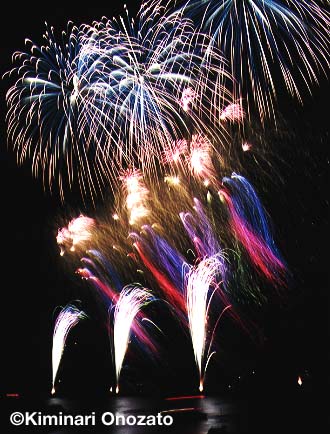For anyone who doesn't know the effect here is a long exposure shot of ones from japan.

And here is some shots of my falling leaf shell construction. Its a 3" plastic shell.
First the time fuse is installed. I use visco as I have no time fuse. A few wraps of masking tape and hot glue do well.

Next is a shot of the leaves we will be using in this shell.

Now 25 leaves are loaded into each hemi like so.

Then the burst is placed in around the leaves to fill in most of the gaps. The burst here is meal on puffed rice.

Don't worry about the leaves being "spongy" because the spring like nature makes the shell contents nice and settled when closed like so using a scrap piece of kraft to stop the contents spilling out.

Next the shell is sealed with xylene. I like to use a sprinkler attachment to drip the solvent in the seam of the shell.
You should turn the shell so the excess solvent runs around the seam until the drop of solvent goes away. After this time the shell seam will be sufficiently soft to close it.

Now the shell is really close by sticking it in a vice. A small lip of shell hemi should appear at the seam when close in the vice. Don't squash it, just enough to get a lip.

Now the shell is dried until you can't scratch the seam with a finger nail. Then a lift pouch, lift charge and leader with an appropriate length of fuse delay is attached. Then the shell is done.
Now disscusion of leaf construction, compositions or anything related to these shells should be discussed here. Go for it!
Just some info on my leaves. They are soaked in granite comp. They burn a red colour if not coated properly but with flashes of blue (for some reason the comp burns blue with paper...) when they float in the air. So I think you could make red leaves just my soaking the paper in KNO3 solution, sort of like touch powder. Just some info for anyone who wants to try. At least everyone can make red leaves! All you need is KNO3 (at least I think it will work)















